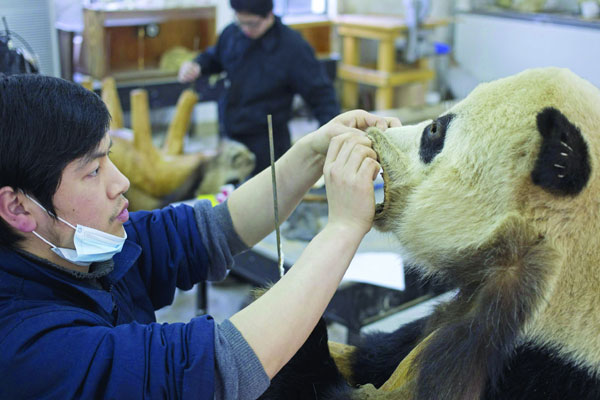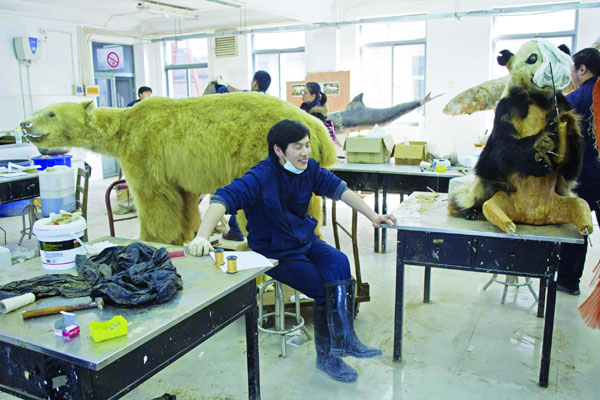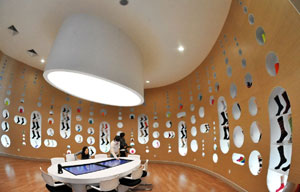The stuffing of legends
 |
|
Yuan Minjie concentrates on making a panda specimen. Photos by Gao Erqiang / China Daily |
 |
|
Craftsmen make animal specimens at a workshop for the relocated Shanghai Natural History Museum that is scheduled to open in early 2014. |
Eight taxidermists painstakingly make animal specimens for the new Shanghai Natural History Museum, scheduled to open early next year. Wu Ni gives the details.
Apeek through a white-colored house on Longwu Road of Shanghai's Xuhui district offers an astonishing scene - a roaring polar bear resting beside a Chinese sturgeon, surrounded by many other rare animals, like giant pandas and crested ibises.
It is not a zoo. It is a workshop where craftsmen make animal specimens for the relocated Shanghai Natural History Museum that is scheduled to open early next year.
As one approaches the workshop, a pungent odor of stale blood, chemicals and decay causes one to frown. But the eight taxidermists, men in their 30s, look oblivious to the stench - each absorbed in their work without wearing a facemask.
"We are used to this, and even bloodier scenes," says Shan Kun, the lead specimen maker.
The center receives dead animals from zoos, wild animal protection zones or donors. The first step is stripping off the fur, then the remains are carefully measured for the size of every muscle. The flesh and guts are removed, while skeletons and fur are preserved in salt and chemical agent.
Taxidermy involves patience and tactics. A 5-meter-tall giraffe specimen, made to look as if it is nibbling leaves on a tree, takes more than six months.
"The skin of the giraffe is thin and crisp - you have to scrape the fat very carefully and the connective tissues that are attached to the skin, because if you scrape too hard, the skin will be damaged," Shan says.
















